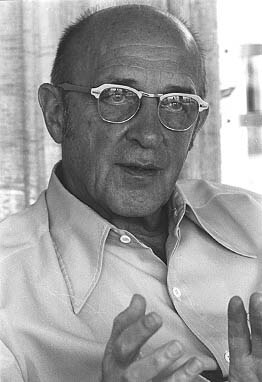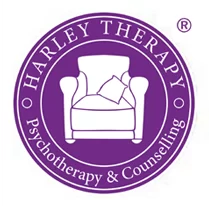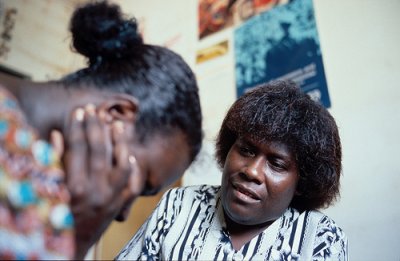What is Person Centred Therapy?
Are you interested in a therapy that focuses on what is right and not just ‘wrong’ with you? And that lets you decide what to talk about?
Person-centred therapy (also called ‘client-centred therapy’, or ‘Rogerian therapy’, after its founder), might be for you.
[Would you like to try person-centred therapy? Book one of our online therapists now from wherever you live in the world.]
What is person-centred therapy?
Person-centred psychotherapy is a humanistic therapy that focuses on helping you find your inner resources and reach your full potential.
Founded by American psychologist Carl Rogers, person-centred therapy developed between the 1940s to the 1980s and the era of the human potential movement. It was one of the first forms of humanistic therapy.
Considered the ‘third wave’ of psychotherapeutic thought, humanistic therapy came after the psychoanalytic and psychodynamic movements. It grew in reaction to these therapies, with their ‘doctor-patient’ relationship that put the therapist in power, and their focus on finding what is ‘wrong’ with patients by looking at their pasts.
Person-Centred therapy laid the groundwork for the humanistic movement with its belief in a supportive therapeutic relationship of equals. It puts the focus on what is right instead of wrong with clients, and considers present-day issues instead of just the past.
Key tenets of person centred therapy

Photo by Natalie Rogers http://www.nrogers.com/
Rogers felt that the key to successful therapy was found in the relationship between the client and the therapist. The therapist had to have a good attitude towards the client for the client to feel safe enough to grow as a person.
He also believed in human potential, that we are all here to grow, and have the capacity to do so. Within each of us is a ‘self-actualising tendency’, and it is the job of the therapist to encourage this tendency.
Rogers expanded these themes into six key conditions for effective therapy, three of which he found so important for effective therapy he called them ‘core conditions’.
These are called congruence, empathy, and unconditional positive regard.
The three core conditions of person centred therapy
Congruence means that the therapist is ‘congruent’, or in line with, his or her real self. They do not pretend to be a wise, all-knowing superior, or hide behind their profession.
Empathy means that the therapist truly desires to understand their client’s perspective and struggles. Empathy is not sympathy. The therapist does not feel sorry for the client, but respects their experience and hopes for the best for them.
Unconditional positive regard is a term that means we work to respect others as they are and see their full potential. Instead of seeking out what is wrong with someone, we acknowledge that each person has resources and inner strength. To see these things we must be open instead of judging, and listen over giving advice.
How is person centred therapy different than other forms of therapy?
If you are wondering if person-centred therapy is right for you, consider the following.
1. It is a client-led therapy.
Psychodynamic therapies put you in more of a ‘patient’ role, and newer cognitive therapies can be so structured the therapist leads the way.
In person centred therapy, you decide what to talk about. Person centred therapy believes the client, not the therapist, has the answers.
The therapist’s job is to create a safe environment and ask the right questions so that you can find these answers for yourself.
2. It’s less structured.
Again, newer cognitive therapies like CBT therapy can be very structured and even have homework. Person centred therapy is an ‘open-ended’ therapy, which means that there is no plan. You show up and talk about what works for you.
3. It can be short or long-term.
Some therapies are only one or the other, but person-centred counselling can be effective in any format.
4. It’s friendly.
Your therapist is not aloof, and trying to act ‘professional’. They work to just be themselves, with all of their personality and experience. They are still a therapist and they don’t talk about themselves. The focus is on you, and that focus is respectful and positive.
5. It doesn’t have to involve the past.
Again, you decide what to talk about. If you want to do several sessions just talking about a current issue, you can. If you want to talk about a childhood experience, you can.
It’s focused on inner resources.
Psychodynamic therapies focus on how the past affects the present, and cognitive behavioural therapies look at how your thoughts and behaviours create your moods.
As a humanistic therapy, person centred therapy is all about your inner resources. What are your strengths, in what ways are you coping already? How can you take the things you already know and move forward?
What issues does person centred therapy help with?
Person-centred therapy can help with:
- anger problems
- anxiety and anxiety disorders
- depression and low moods
- grief and bereavement
- family problems
- life change
- relationship problems
- sexuality and sex problems
- stress.
Would you like to try person-centred therapy? Harley Therapy connects you with experienced and registered person-centred therapists in central London. Or use our online booking platform to find affordable online therapy accessible UK-wide and internationally.






